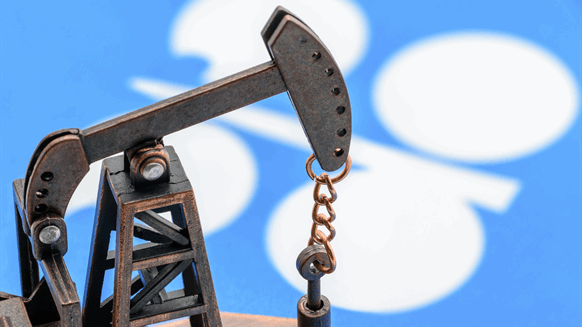SageBrush
REJECT Fascism
I don't care about the rate increases, I care about the federal fraud.It's both tax credits and also rate increases. Their customers have been paying for this for years... wanna guess if they'll get refunds?
You can install our site as a web app on your iOS device by utilizing the Add to Home Screen feature in Safari. Please see this thread for more details on this.
Note: This feature may not be available in some browsers.
I don't care about the rate increases, I care about the federal fraud.It's both tax credits and also rate increases. Their customers have been paying for this for years... wanna guess if they'll get refunds?
I know everyone seems to be talking about TX, but it’s interesting that 35 GW of solar and wind, as well as a lot of batteries, are in the development pipeline. That will massively change the economics of fossil fueled power plants. Sure hope that the new ones are winterized.Hmmm, maybe that’s why the older gas generators never bothered to winterize: they knew that they would be obsolete in 5-10 years.

Texas to Add 35 Gigawatts of Wind & Solar in Next 3 Years — Boosting Grid Resilience
Keep in mind that the popular idea that there is a limited supply of oil is not true
More People, More Ideas, More Innovations, More Value Created - HumanProgress
I noticed you selectively ignored the batteries part of the quote. That solves the intermittency problem you complain about. But of course you know that.Unfortunately, wind and solar does not allow decommissioning of other plants because of the intermittency problem
This is why looking at raw installed cost of wind and solar is misleading
When you install solar & wind you don’t get the cost savings of shutting down other plants
This is kinda sorta true, and is deceptive as stated.Unfortunately, wind and solar does not allow decommissioning of other plants because of the intermittency problem
This is why looking at raw installed cost of wind and solar is misleading
When you install solar & wind you don’t get the cost savings of shutting down other plants
Unfortunately, wind and solar does not allow decommissioning of other plants
I knew that peaker maintenance was cheap (from you, I think) but thanks for the reminder of the actual numbers.That would only be a problem if the LCOE was more than the cost of fuel... which it's not. 500MW of wind was recently built in NM... not because that would allow them to retire any gas plants... but because the cost of fuel is ~$30/MWh and the LCOE of wind is <$20/MWh. Solar is roughly the same.
Only costs ~$20/kW/yr to maintain a gas plant. Nothing wrong with keeping them incase you need them AND building GWs of solar and wind so you don't have to waste $$$ on fools fuel.
I knew that peaker maintenance was cheap (from you, I think) but thanks for the reminder of the actual numbers.
When you install solar & wind you don’t get the cost savings of shutting down other plants
Hmmm. I read it as saying that market supply limits have been market manipulations. That really does not say anything about the extent of the resource. And frankly, resource amount is very much determined by how much the consumer is willing to pay and the cost of extraction. If the consumer will pay $100 a barrel and could not care less how much pollution is caused and how lousy a product is being bought (shale, *cough* *cough*), the reserves are enormous. If 'liquified coal' is included, I seem to remember hundreds of years of reserves.This paragraph clearly seems to imply that there is in fact a limit to the supply of oil.

 www.rigzone.com
www.rigzone.com
The better question is whether OPEC can push prices much past $60 a barrel post Covid without awakening the shale frackers. I doubt it.
Shale Giants Proving OPEC Right
Saudi Arabia's bet that the golden age of U.S. shale is over appears to be a safe one - for now, at least.www.rigzone.com
(Bloomberg) -- Saudi Arabia’s bet that the golden age of U.S. shale is over appears to be a safe one -- for now, at least.
A round-up of data on shale drillers shows they’re sticking to their pledge to cut costs, return money to shareholders and reduce debt. If they stay the course, it would validate the OPEC+ alliance’s high-stakes wager that it can curb output and drive crude prices higher without unleashing an onslaught of supply from U.S. rivals.
The better question is whether OPEC can push prices much past $60 a barrel post Covid without awakening the shale frackers. I doubt it.
No subsidy (at least in the narrow use of the word) involved, but I think you are right that speculators capitalized a large fraction of the shale ventures. The thing is though, a large fraction of the investment needed up to the point of extracting shale has been performed and is a sunk cost. So now the money question is whether the cost of extraction is lower than the market price. That is not a high bar.But shale was largely subsidized by speculators.
Common Dreams: US Probe Underway Over Euphemistic 'Clean Coal' That Actually Increased Pollution. US Probe Underway Over Euphemistic 'Clean Coal' That Actually Increased Pollution
We subsidize coal?
RFF said:The refiner typically buys the unrefined coal from the coal plant at cost, refines it, and sells the now-refined coal back at a discount from $0.75 to $2.00 per ton (McLaughln 2018c), implying that some of the incidence of the credit falls on coal plants.


